Processes affecting the life cycle
Now consider the processes of pollination, seed dispersal and predation in the context of the life cycle, as well as ongoing processes such as seasonality and aging.
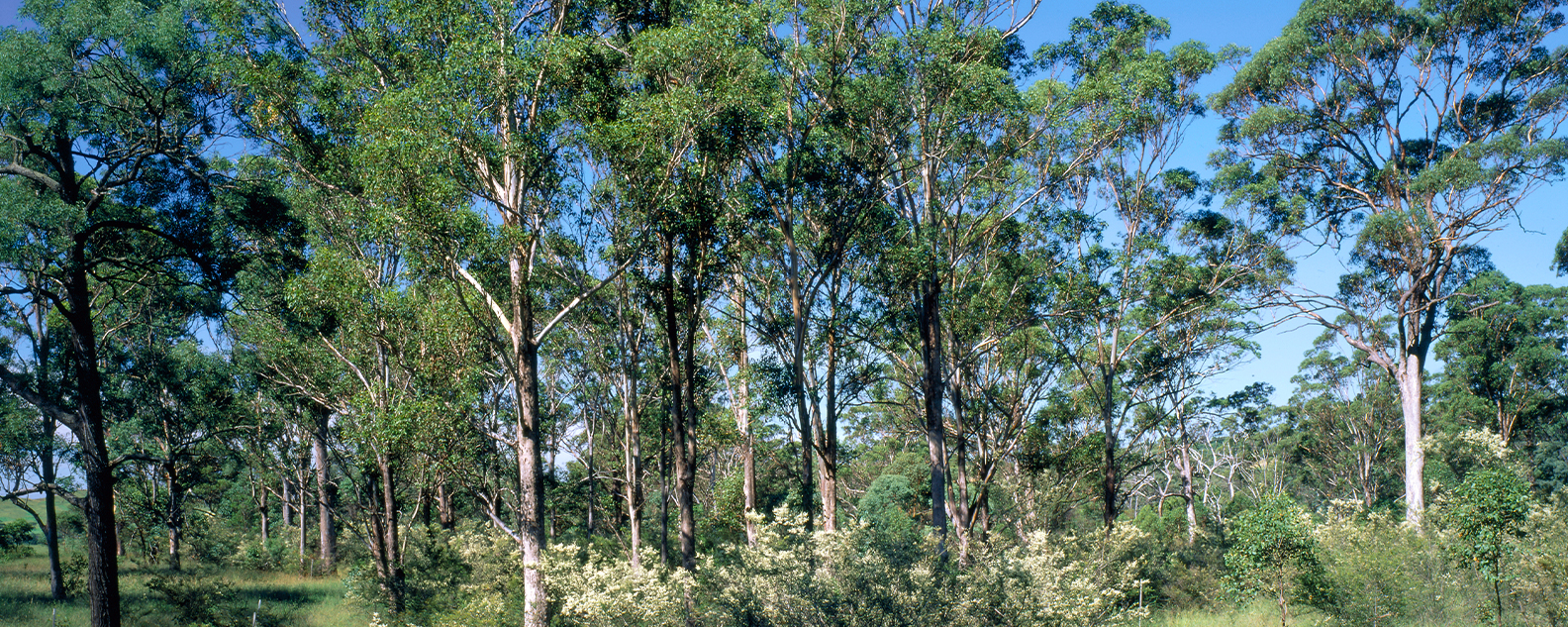
Germination
Germination is the process by which the seed develops into a seedling. With adequate soil moisture, some species, will produce 100% germination immediately e.g. Brunoniella australis, Solenogyne bellioides. Freshly collected seed of these species have no dormancy mechanisms. Other species have timing mechanisms that allow them to germinate at a particular time of the year that is most suitable for establishment. Dormancy mechanisms ensure that seeds do not germinate until the right conditions are met.
Types of dormancy include physical dormancy where species with hard-coated seeds e.g. Convolvulus angustissimus, Dodonaea viscosa require physical breaking of the seed coat before germination (generally by fire). Seeds of the legume family Fabaceae, peas and wattles, e.g. Zornia dyctiocarpa, are also good examples.
Morphological dormancy is where the embryo needs to develop within the seed coat before the seed will germinate e.g. Bursaria spinosa.
Physiological dormancy is where the embryo is fully grown at seed maturity but specific conditions are required before germination occurs e.g. require fluctuating temperatures.
A wet period within a soil temperature range of 5-20ºC provides the final germination trigger for many species. Within this range, cooler season germinating species may be Ranunculus sessiliflorus, Daucus glochidiatus, Cotula australis, *Stellaria media, *Anagallis arvensis, Trifolium species. Warmer season species may include Dichondra repens, *Sida rhombifolia. Species germinating over a wide range of temperatures include Geranium homeanum, *Plantago lanceolata.
Many species require light for germination, particularly species that recruit into disturbed sites, e.g. Crassula sieberiana, Daucus glochidiatus, Einadia nutans subsp linifolia, Einadia trigonos, Plectranthus parviflorus, Calotis lappaceus, Centipeda minima, Wahlenbergia stricta.
Asterisk * indicates exotic species naturalised at the Australian Botanic Garden.
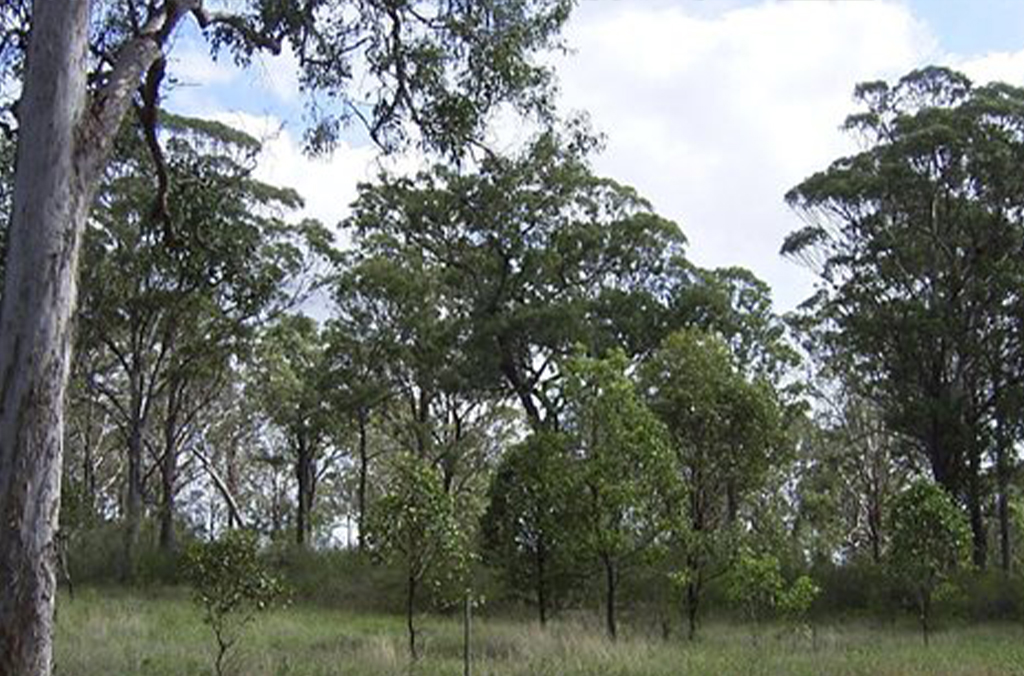
Growth and maturity
Rainfall in the woodland averages about 800 mm per year with about 60% falling in the autumn and 40% in the spring.
There are occasional frosts in winter and plant growth generally browns off during this period. Summers are hot and plant growth is reduced. Most plant growth is in autumn and spring.
See A Year in the Woodland for month-by-month details of growth in the woodland.
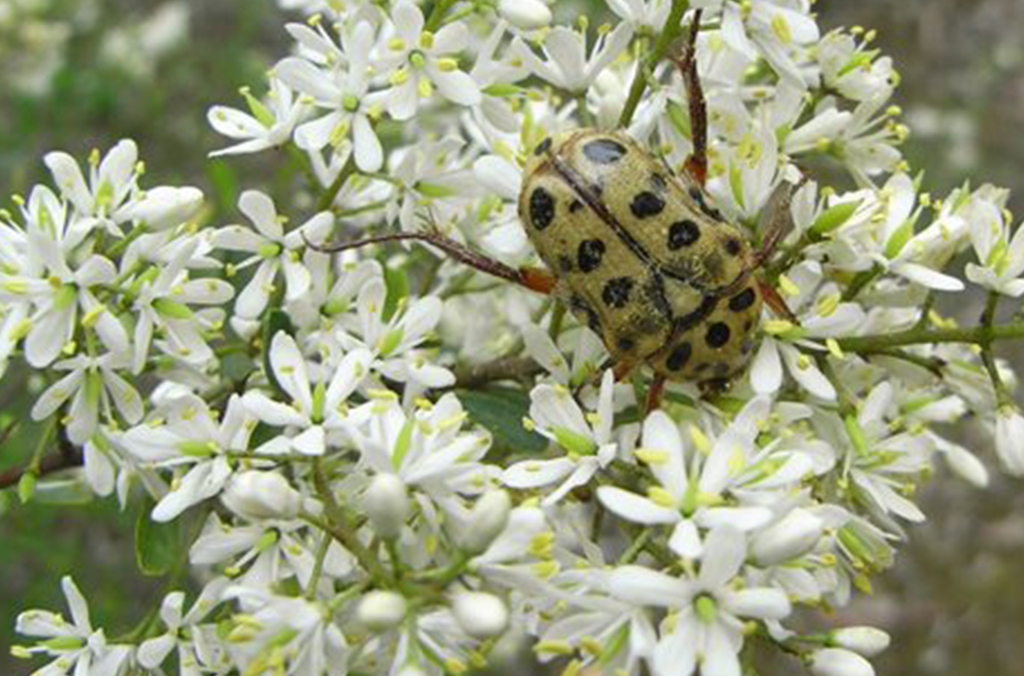
Pollination
Flowers are the sexual organs of the plant and the initial stage in its reproduction. The flower’s purpose is to enable the pollination process to take place. Pollination involves the transfer of pollen from the anther to the stigma and fertilisation of the ovule. Following pollination the fertilised embryo develops into the seed and the surrounding tissue into the fruit.
The stamen and the stigma may be in close proximity on the same flower, or in a few species, on separate flowers, on separate plants. To improve genetic variability in progeny it is preferable for pollen to reach stigmas on separate genetically different plants. To get the pollen from the stamen to the stigma, plants have evolved a number of ways, generally involving external factors such as wind or interactions with animals. Some plant species may be self-pollinating.
Successful seed-set needs pollination, but pollinated flowers may not necessarily lead to successful seed set. Adverse weather conditions, inadequate rainfall, very hot days etc may lead to failure to set seed.
In some species wind is used as the pollinating vector e.g. Plantago gaudichaudii produces clouds of pollen when knocked. Wind-pollination appears to be fairly wasteful of large amounts of pollen but presumably works well for species with large numbers of relatively nearby individuals, which mature more or less simultaneously. Grasses as a group are wind-pollinated – this explains why they have such unobtrusive flowers – they don’t need to draw anyone’s attention. The anthers may be the most colourful part of the flower.
Animal-plant interactions would appear to be more efficient in getting pollen to more sparsely dispersed individuals. For this however plants pay a price, having to provide an attractant such as nectar as food for the animal. Little is known about the pollination of most of our native woodland species.
Orchids are renowned for their intricate pollinator partnerships. The woodland orchid Pterostylis curta is pollinated by pseudocopulation of male fungus gnats (Mycetophilidae), while Dipodium punctatum is pollinated by the native bee Chalicodoma derelicta. These orchids are very rare in our woodland and we have no observations on pollination but have noted some seed set.
Another family with particularly specialized flowers is Asclepiadaceae whose pollination mechanism may be conspicuously specialized (involving trapping of insects' (often flies) legs or probosces between the osmotically elastic anther wings, and withdrawal entailing capture of the pollinia by means of `sutured corpuscular pollen carriers'). Species in the woodland include Marsdenia viridiflora and Marsdenia rostrata, the exotic *Gomphocarpus fruticosus and the closely related Parsonsia straminea (Apocynaceae).
Other species are probably pollinated by native bees e.g. Dianella longifolia, Solanum cinereum while the introduced Honey bee *Apis mellifera is very common and visits both exotic and native species, though whether it helps or hinders seed-set in native species is not known.
Flying foxes may visit the woodland at night, perhaps pollinating the Eucalyptus species. Birds may be involved in some pollination though we have not identified any particular species for plants in our woodland. Birds are reported to pollinate many native species in other vegetation types such as Grevillea in sandstone woodlands but these species are not found in our woodland, though Grevillea juniperina occurs in Cumberland Plain Woodland near Blacktown.
Asterisk * indicates exotic species naturalised at the Australian Botanic Garden.

Establishment
Seedling recruitment is episodic. Establishment and survival depend on adequate rainfall. Rainfall followed by hot weather is likely to result in the death of all seedlings and juveniles. In drier conditions, autumn has been the best season for growth and maturity; spring recruits have faced major mortality during the hot dry summers.
The best seedling recruitment episode we have noted was immediately after good rain in February 2003, which followed a very dry 2002, including a record period without rain. We particularly noted an abundance of short-lived ephemerals including Ranunculus sessiliflorus and Daucus glochidiatus. Whether it was the dry conditions in the soil or the record high temperatures reached that broke the dormancy mechanisms for many species, we do not know. The relatively open soil surface conditions in both previously burnt and unburnt areas may also have been factors in juvenile survival.
In recent years during a long period of below average rainfall, short periods of rainfall of as little as 30 mm have caused pulses of seedling germination but subsequent lack of follow-up rain has lead to death of all seedlings. For example in 2005 all seedlings of Pimelea spicata, Ranunculus lappaceus, Daucus glochidiatus and Rhodanthe anthemoides died. Similarly cohorts of *Sida rhombifolia seedlings germinating following fire, have died in dry conditions. Continuing conditions like this will deplete the soil seedbank. While this may be deleterious to native species it may reduce the number of individuals of some weed species.
Asterisk * indicates exotic species naturalised at the Australian Botanic Garden.
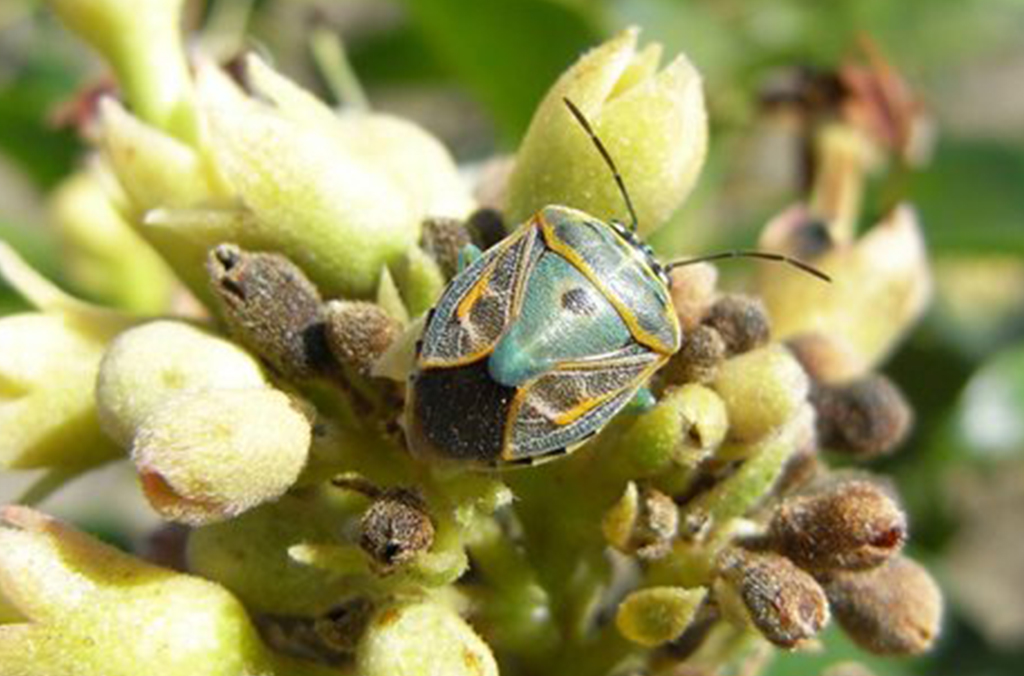
Predation: grazing and herbivory
Plants have their predators; they are eaten by many things. Most obvious are the large animals, particularly mammals and birds (this process is generally known as grazing or browsing). Predation by smaller invertebrates, particularly insects, but also molluscs, is generally known as herbivory.
In pre-European times (pre-1800) grazing and browsing animals in the woodland would have included native macropods, kangaroos and wallabies. In the farming period (19th and 20th centuries) these would have been more or less replaced by introduced cattle, sheep and horses. Rabbits have been in the Australian environment since the 1860s, and though initially absent in the more open landscape of our woodland in 1988, have re-established there since 1990 as the groundcover has become denser. Wallaroos and Swamp Wallabies have established in the Australian Botanic Garden and have been periodic visitors to the woodland since the mid 1990s.
Over the past decade, rabbits, digging for roots and using bared areas as latrines, have caused, and continue to cause, the most obvious vertebrate impacts on the woodland vegetation. Their activity is most evident during dry and drought periods. In general there appears to be very little discrimination for particular plant species, especially in their diggings, and we could never understand what, in particular, the animals preferred.
There does however appear to be selective grazing of some species, at least at certain times, as we noted particular browsing of plants of the yellow flowered daisy Calotis lappulacea, such that plants were severely denuded, in comparison with some caged plants in the exclosure areas. Available plants a short distance away were not touched. Rabbit browsing may however explain the very low numbers of Calotis lappulacea in the woodland.
Hares have been observed in the woodland, presumably browsing on plants, but they run too fast for us to find out what they eat!
Wallaroo and Swamp Wallaby (macropods) grazing appears to be more systematic than the rabbits, and concentrated particularly on grass tussocks, though we have not noted any species preferences. Again we know virtually nothing about the ecological impacts on the distribution of woodland plants. Their habits of creating bared areas where they camp may provide potential plant germination microhabitats, and it is possible they may also carry some seed long-distance by adherence to fur. However a future population build-up of any grazing animals in a relatively confined area has potential to cause serious deleterious grazing impacts.
Bared soil may provide suitable sites for germination of some plant species. In pre-European times, digging by bandicoots and native rats may have provided those conditions, but they have now disappeared; rabbit diggings may possibly be providing a similar microhabitat.
For example, at times there appear to be concentrations of seedlings of Solanum prinophyllum associated with rabbit latrines particularly during dry periods. Whether the rabbits are eating Solanum fruits and leaving them on the latrines in their scats, or whether soil conditions on the latrines are favourable for germination of Solanum seed already in the seedbank, we do not know.
Though insect herbivory is likely to have a major impact on the abundance and distribution of woodland plants, we know very little about the insect/plant interactions. Leaves, shoots, stems, flowers, fruits, seed and roots may be eaten. Here are a few interactions we’ve noted. See our invertebrate species lists and image galleries for more information.
Herbivory on the eucalypts is particularly significant, and includes many leaf eating insects, gall forming insects and stem boring insects. Periodic defoliation of Eucalypts (dieback) occurs when canopy eating insects build up in unusually large numbers due to environmental or climatic conditions, see plagues and diseases.
The Brown Leaf moth larvae Phallaria ophiusaria cleverly camouflaged as a twig, feeds on shrubs of Dodonaea viscosa (also reported to feed on Acacia and Hakea). The caterpillar larvae of Joseph’s coat moth Agarista agricola feed on leaves of the vine Cayratia clematidea. Crusader bug Mictis profana is a sap sucker on Hardenbergia violacea (and also on a range of garden plants). Larvae of the Botany Bay weevil Chrysolopus spectabilis (the first insect to be described from Australia) feed in the wood of wattles.
Milkweed bug Lygaeus kalmii is also found on *Gomphocarpus fruticosus and we have seen nymphal stages hiding in fruiting parts of the related natives Parsonsia straminea and Marsdenia rostrata. *Gomphocarpus fruticosus was introduced to Australia in the 1830s and had spread widely in western Sydney in the 1840s. It is the host plant for the caterpillars of the Lesser Wanderer Butterfly, which appears to have been an accidental introduction to Australia, though it needed the pre establishment of the Gomphocarpus. The bright colours of the caterpillars warn of their unpalatability due to chemicals taken from the host plant.
Most aphid species have been introduced to Australia with their host plants. In the woodland we have found Oleander Aphid *Aphis nerii on *Gomphocarpus fruticosus. It has also been recorded from species of Ascepiadaceae and Apocynaceae and could occur on native species such as Marsdenia and Parsonsia. We have also noted Aphids on Chloris ventricosa fruit.
Mature seed is eaten by insects such as ants, while developing seed may be eaten from within. Larvae of a Diptera midge eat Brunoniella australis seeds as they develop and in recent years all seed crops in the woodland appear to have been eaten. Interestingly, good seed collections of Brunoniella were made at Glenmore Park a few years after fires burned extensive areas in December 2001.
Seeds of Desmodium brachypodum are also eaten from within, by a different insect, though in this case not all seeds in a capsule are consumed.
Root-eating insects include the large grub Abantiades, up to 8 cm long, which emerge from the ground in Autumn as the grey-brown Swift moth. Larvae of cicadas and many beetles also spend most of their lives underground, eating plant roots. The characteristic holes up to 2 cm diameter, that the cicadas and swift moths emerge from as adults, also allow water to penetrate deeply into the soil.
Other invertebrates in the woodland are snails including the Endangered Cumberland land snail Meridolum corneovirens which eats fungi, and the introduced Garden snail *Helix aspersa. It is likely that *Helix aspersa consumes seedling plants, both native and exotic, but although dead shells are common, it is rarely seen, and the extent of its predations are unknown. It is likely to impact on seedling recruitment during wet periods, when it might be selective for some species. The snails themselves are preyed upon by the Carnivorous Land Snail Austrorhytida capillacea and parasitized by the fly Amenia imperalis.
A factor in the success of many exotic plant species may be that they do not have many insect predators; these were left behind in their country of origin. For example exotic African Olives *Olea europea subsp. cuspidata in the woodland have healthy canopies with well-formed leaves that show little evidence of leaf eating insects. Compare these with the invariably chewed leaves of the eucalypts, or the stems of the native shrub Bursaria spinosa that always seem to carry some form of creature.
Scientific biological control programs have involved the introduction of controlling organisms from their county of origin. A well-known, and remarkably successful example was the introduction of the *Cactoblastus cactorum moth to control Prickly Pear (*Opuntia species) in eastern Australia in the 1920s. Biological control rarely involves the complete eradication of the target, and some plants will generally survive. In our woodland there are still scattered plants of *Opuntia stricta, but every now and then, under the right climatic conditions, a plant is parasitized by the *Cactoblastis moth and destroyed by its caterpillars which turn the cactus leaves to pulp.
Asterisk * indicates exotic species naturalised at the Australian Botanic Garden.
Seed and fruit predation
Many things eat fruits and seeds. In some cases the fruits are specifically attractive and palatable to attract a bird or animal to eat the fruit and consequently disperse and spread the seed, which is suitably protected within a hard part of the fruit. The exotic species Blackberries *Rubus and African Olive *Olea europea subsp. cuspidata have fruits and seeds that are spread in this way by birds and foxes. In their cultivated forms the fruits of both these plants are also eaten by humans.
The red fruits of Einadia hastata and mauve fruits of Eremophila debilis are presumably eaten by birds.
Some species have seeds with a fleshy part (an eleiosome) that is attractive to ants. The ants carry the seed, strip off the fleshy part and then dump the seed, having moved it some distance from the parent plant. Some species of ants however eat the seed as well as the fleshy part.
Destructive predation on seeds and fruits may be by direct consumption, such as by many birds. To avoid loss of all their seedcrop some species may produce seed over a long period, as predators may only be active for a relatively short time. Other species may produce a lot of seed over a short period, to try to ensure that some will avoid predators.
An interesting parasitic form of seed predation is carried out by some weevils and flies, whereby eggs are laid in the developing fruit, hatch out and eat seeds as they develop within the fruit e.g. Desmodium brachypodum.
Asterisk * indicates exotic species naturalised at the Australian Botanic Garden.
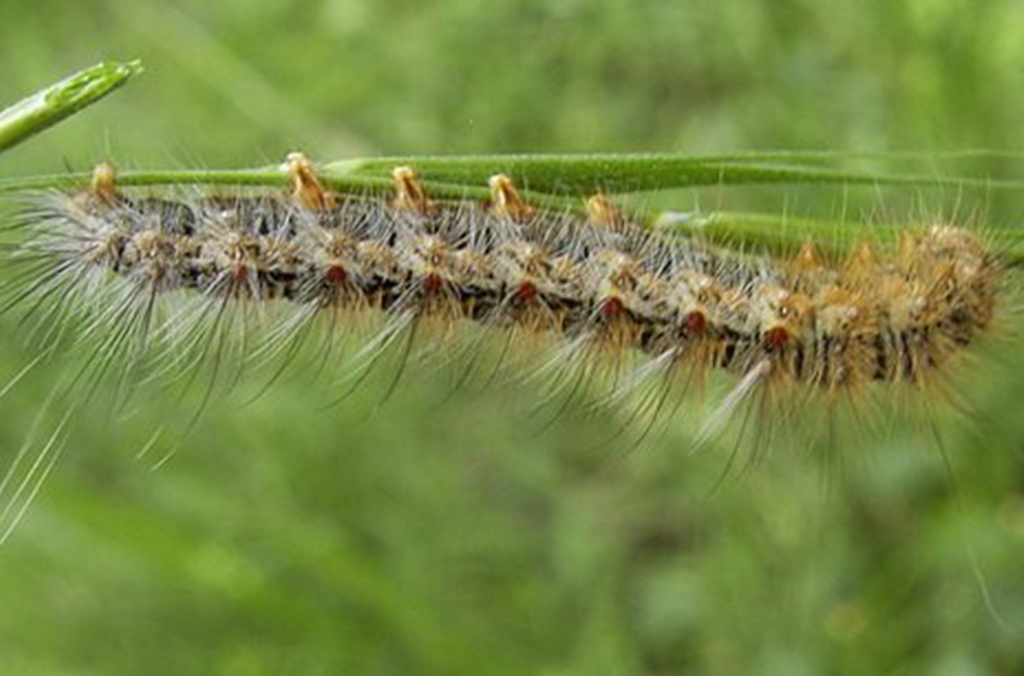
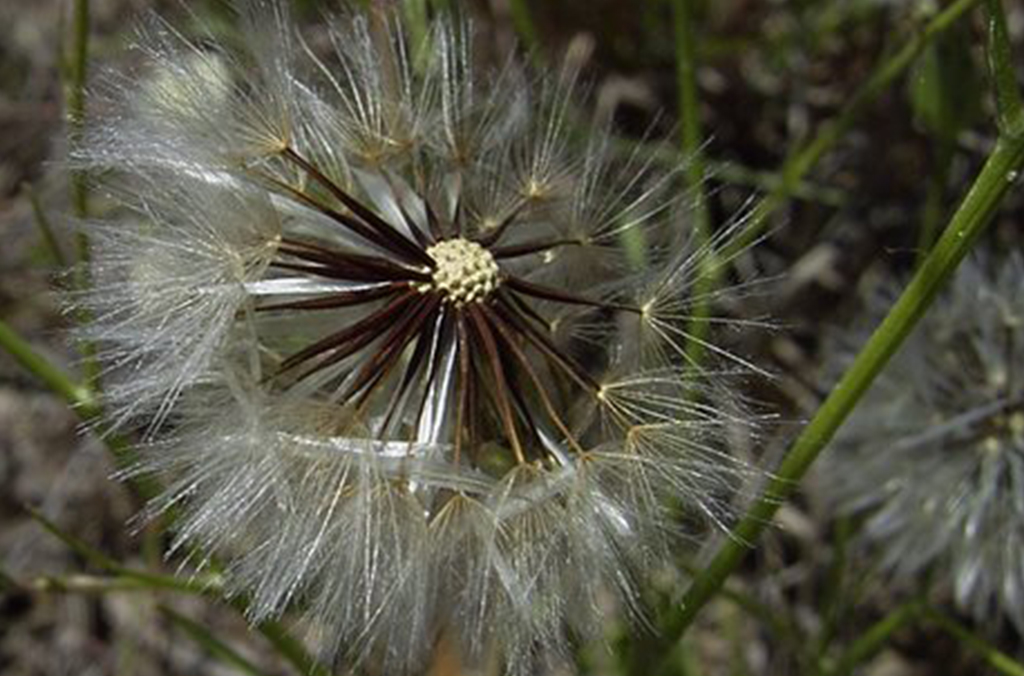
Seed dispersal
Seed dispersal is the critical period when a plant sends its progeny out into the world. Plants have evolved various means to get their seeds to suitable places for germination and growth.
Some seeds have structures that allow them to be moved by forces such as wind and water while others are moved by animals including mammals, birds and insects. Some have no apparent mechanisms and fall on the ground near the parent plant.
Mammals are also involved in seed dispersal. Foxes eat and disperse the fleshy fruits of the exotic African olive *Olea europea subsp. cuspidata and African Boxthorn *Lycium ferocissimum. We have some evidence that Swamp wallabies or Wallaroos may disperse small amounts of native species e.g. Centipeda minima and Persicaria decipiens but mainly exotics e.g. *Solanum nigrum, *Sida rhombifolia and *Setaria gracilis, in their scats. Some species may be dispersed by rabbits. We have observed Solanum prinophyllum germinating on rabbit latrines.
Many seeds, particularly grasses, may adhere to fur and be carried distances. Some grass species e.g. Themeda triandra, Austrostipa setacea, Aristida ramosa have spiky awns and barbed appendages that may adhere to animals, while other species e.g. Chloris ventricosa, Bothriochloa macra, Dichelachne micrantha have rough surfaces that may adhere. The native carrot Daucus glochidiatus has hooked spines. The seeds of Plantago gaudichaudii and Linum marginale, may be sticky when wet, aiding dispersal.
Human movement of many seeds on socks, vehicles, lawn mowers, etc may also be important, particularly for weed species. Woodland species you may collect inadvertently include natives, Microlaena stipoides, Aristida ramosa, Desmodium brachypodum, Lagenophora gracilis and weeds like *Bidens pilosa, *Paspalum dilatatum.
Plants with fleshy fruits such as Einadia nutans subsp linifolia, Eremophila debilis, Dianella longifolia and Exocarpus cupressiformis appear to be bird-dispersed. African Olive *Olea europea subsp cuspidata are bird dispersed and are more abundant under large trees. We have seen the fleshy fruits of Einadia nutans subsp. linifolia being moved by ants.
Some seeds are moved long distances by wind and water. Large plumed seeds on some of the vines like Parsonsia straminea and Clematis glycinoides and the weed *Araujia sericifera. Small hairy pappus hairs assist some daisies to disperse e.g. Senecio quadridentatus, Vernonia cinerea, Vittadinia sulcata and the weeds *Senecio madagascariensis and *Sonchus oleraceus. Dodonaea viscosa has winged fruit but they probably only result in localised dispersal.
Some species have mechanisms for local dispersal. Some have food bodies (eliasomes) that are attractive to ants, who move the seed and remove the food body e.g. Acacia implexa, Cymbonotus lawsonianus, Other species have fascinating ballistic dispersal mechanisms e.g. Oxalis perennans, Daviesia ulicifolia, Indigofera australis, Lotus australis, Geranium homeanum.
The long-reaching spidery inflorescence of grass seeds may place the seed beyond the immediate location of the parent plant. Clustering of grass plants in open areas suggests this method of operation, e.g. Elymus scaber, Themeda australis.
Some species have seeds that lack dispersal mechanisms and some of these are very tiny e.g. Pterostylis curta and may be dispersed by wind, but others are larger and appear to fall mainly close to the adult plant e.g. Solenogyne dominii. However given that adult plants have already found suitable growing conditions it may be advantageous to the seed to stay in the appropriate habitat close to home e.g. Pimelea spicata, Plantago gaudichaudii.
- Species with no special morphology, e.g. Wahlenbergia stricta, or ballistic devices, drop seed beneath or within a few metres of the parent.
- Ants generally move seeds with food bodies up to 5 metres away, with a few long-distance exceptions - 77 metres in one case! Wings and plumes may help disperse seeds further, most reported distances are less than 100 metres from tree height, but when parent plants are small herbs like the daisy Rhodanthe anthemoides the distance travelled is more limited. Dust-like spores and orchid seeds may be carried much further by wind than other seeds without adaptations.
- Animals would have played a role in dispersing seeds with adhesive devices such as the spines on seeds of the burr daisy, Calotis lappulacea. However, native animal populations have been severely depleted, and they are now missing or confined within the one remnant. The potential for long distance travel by animals is blocked by impassable obstacles between today’s fragments.
- Fleshy fruits may still be carried between nearby remnants by birds or possibly mammals, although the chances of a bird arriving in one fragment with fruit from another are of course severely reduced compared with the possibilities before fragmentation. Only 10% of species in Cumberland Plain Woodland produce fleshy fruits.
Seeds of most Cumberland Plain Woodland plants are small, and lack means for long-distance dispersal, especially between today’s isolated fragmented remnants. Most can’t cross a road.
Asterisk * indicates exotic species naturalised at the Australian Botanic Garden.
Aging, death and decay
Many plants live for long periods. The large trees in the woodland with trunks up to 1 m diameter may be more than 200 years old. Some of these are the largest we know of in western Sydney.
The main shrub Bursaria spinosa, Blackthorn, may also live a long time. This is because if it is cut at the base or burnt by fire it can resprout - its roots are extensive and it regrows. As long as its roots are not disturbed it can live almost indefinitely, unless it is actually killed e.g. by drought or lightning.
Many of the ground species are similar. They have rootstocks that they resprout from. Many of the shrubs and groundlayer plants may live for up to 50 years, while some ground species may live for indefinite periods. Decay and death probably occur mainly after very severe conditions such as drought and storms. A few of our woodland species are killed by fire.
Breakdown of dead plant material by insects such as termites and worms is an important component in recycling of biomass, particularly in the absence of fire.